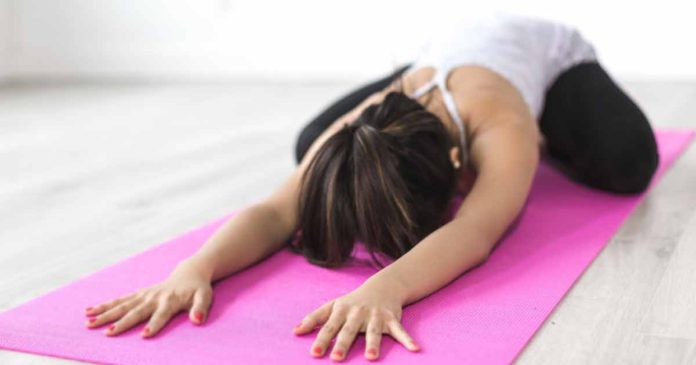What is yoga?
Yoga started in northern India as a spiritual practice. Nowadays it has become more popular because of the way it promotes mental and physical well-being. Yoga emphasizes breathing techniques, meditation, and good posture.
What are the benefits of yoga?
Yoga has a lot of benefits which are both mental and physical. Research shows that the benefits of yoga include:
- Reduction and relief of neck and back pain
- Loss of weight
- Alleviates the symptoms of certain chronic diseases and improves the quality of life
- Stops bad habits such as smoking
- Relieves anxiety and stress
- Improves mental and emotional health
- Balance
- Improves body posture
What is the risks of yoga?
Yoga is safe when you are guided by a well-trained instructor. However, just like other physical activities, injuries can happen. Sprains and strains are common injuries that can happen, but serious injuries are rare. If your age is 65 years old and up, you might be prone to injuries when doing yoga.
To reduce the risk of having injuries during yoga sessions:
Practice yoga under the supervision of a well-trained practitioner.
If you are a beginner, avoid doing extreme activities such as lotus positions, headstands, and forceful breathing.
Bikram yoga “hot yoga” can cause dehydration and overheating, so be cautious.
Older adults, people with health problems and pregnant women should consult first with a doctor before starting yoga.
Getting started with yoga for beginners
Having your first yoga session may be exciting. However, you should know certain things before starting. A typical yoga session lasts for 45 to 90 minutes and begins with a warm-up, followed by a sequence of poses. It ends with meditation as a cool-down phase.
You should also know the proper attire for a yoga session. Choose to wear stretchy shorts or pants, and a close-fitted top. Footwear is not used in yoga, because yoga is done barefoot.
You need to have class etiquette, and learn to respect your instructor and fellow yoga students. Also, showing up at the right time for class and turning off your phone while in the session are some of the class etiquettes you need to do.
Yoga poses for beginners
The different poses of yoga can be easy when you are just watching, but doing this might change your mind. You can try the basic poses and try to master them before jumping to extreme poses like headstands. Here are the best poses that beginners can do.
Mountain Pose (Tadasana)
This is the most basic pose in yoga. This might look easy because it is just basically standing. If you do this regularly, you can improve your legs and torso. This can be good for improving your self-confidence and can also relieve anxiety.
Here are the steps:
- Stand with your big toes barely touching, and your heels slightly apart. A good way to gauge your stance is to see if your second toes are parallel.
- Press into all four corners of your feet: big toe, little toe, right side heel, left side heel. As you push into your feet, feel how that engages your entire leg and keeps those muscles active.
- Take a deep breath and roll your shoulders up and back, releasing them down, so your shoulder blades are resting toward each other and your neck is long.
- Take a few deep breaths here. Close your eyes if you like.
Forward Fold (Uttanasana)
When you are ready to move on, have a take deep breath.
- On your inhale, lift your arms to the sides and up, over your head.
- On your exhale, release your arms (either in front of your body or out to the side, like a swan dive) as you fold your torso over your legs. On the first time though, have at least a slight bend in your knees. No matter how flexible you are, your hamstrings will be cold when starting, and you’ll want to be gentle with them.
- As you relax into the pose more, begin to straighten your legs as far as what feels good. Anything that pinches or is a shooting pain should immediately stop your movement. Let gravity do the work here — don’t pull yourself down and try to force the fold.
- You can put your hands on your shins, your feet, or on the floor. This passively lengthens your spine and your hamstrings, and it’s also a great way to work on balance.
Plank Pose (Uttihita Chaturanga Dandasana)
These works in all of your front muscles.
- From Forward Fold, put your hands flat on the floor, bending your knees as much as needed to do so. Step back one leg at a time, until you’re in a high Plank Pose.
- Press into your hands, keep your legs parallel and engaged, and pull your belly button toward your spine.
- Take a few deep breaths here, working your core and your arms.
Downward-Facing Dog (Adho Mukha Svanasana)
This post is good for stretching your back leg muscles and it also elongates your spine. It can calm your nervous system, relieve stress, and help with headaches.
- From Plank Pose, push into your hands and lift your hips up and back on the inhale. One thing that can be tricky with this pose is again, keeping your shoulders engaged but not working too hard, and keeping a neutral spine.
- Your legs should be straight, and your heels working toward the floor. There will probably be some space between your heels and the floor. You could be very flexible, but if your legs are a bit on the long side, you probably won’t have your heels to the floor. That’s fine. Keep your legs active and heels reaching toward the ground.
- On your first time in this pose, pedal out your feet a little bit to warm up your leg muscles.
Yoga can be exciting while at the same time, be beneficial for your body. However, remember to do this with caution and always look for a well-trained instructor to guide you in the proper ways of doing the different poses of yoga.




















